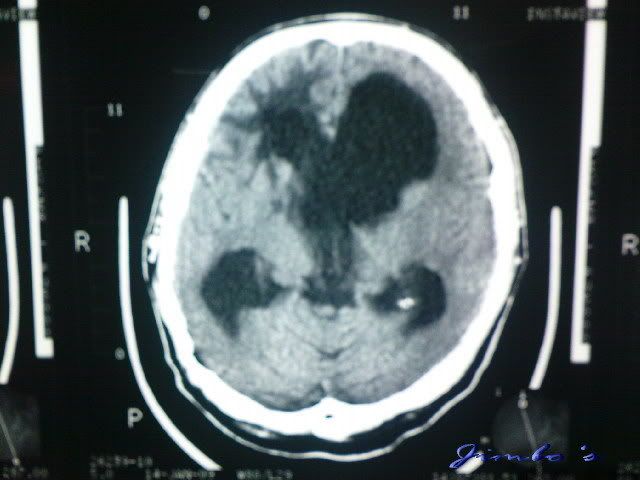56-year-old man presents with status epilepticus. According to the family members, he was diagnosed 6 years ago with epilepsy when he presented with the first episode of seizure. He was subsequently prescribed anti-epiletics but continued to have episodic seizures despite being adherent to his medications. Like many similar patients, no EEG was ordered nor a CT scan of the brain done for him. There is no family history of seizures nor does he takes any drugs, alcohol or traditional medications.
When he was more lucid, other than being of slow mentation, there were no other focal neurological signs.

questions:
1) comment on the CT scan
2) what is the next course of of action?
answers
1) There is gross hydrocephalus, suggested by the dilated lateral ventricles as well as the 3rd ventricle. The fact that the latter is dilated as well suggests a block in the connecting duct between it and the 4th ventricle (the aqueduct of sylvius) or a generalised hydrocephalus. There is also an irregular lesion in the right frontal lobe, with density between that of brain matter (grey) and CSF (black). This might suggests a tumor.
2) The immediate action to take is to alleviate the raised intracranial pressure. A neurosurgical referral should be made for a VP shunt to be inserted. Later on, investigations should be done to identify the cause of the hydrocephalus, which in this case is most likely due to a brain tumor.
*credit to jimbo*
2) The immediate action to take is to alleviate the raised intracranial pressure. A neurosurgical referral should be made for a VP shunt to be inserted. Later on, investigations should be done to identify the cause of the hydrocephalus, which in this case is most likely due to a brain tumor.
*credit to jimbo*